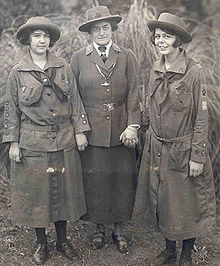A Brief History
On March 22, 1872, the State of Illinois became the first state to enact a law requiring equal treatment of men and women in hiring. The rest of the United States would not find this Gender Equality under the law until Title VII of the Civil Rights Act of 1964, the Equal Employment Opportunity provision that made it illegal to discriminate in employment hiring based on race, color, national origin, religion or sex. Note: March is Women’s History Month.
Digging Deeper
Exactly 100 years after the ground breaking move by Illinois, the United States Congress sent the Equal Rights Amendment to the US Constitution (ERA) to the states for ratification. With 38 states needed to ratify, supporters were heartened when 35 state quickly added their support. Oops! Soon afterward, 5 of those state withdrew support, and despite a 3 year extension on the time limit for ratification, no other states ever came forward to ratify the ERA. You might be surprised to know that the ERA was first proposed in Congress back in 1923.

Why would anyone decline to support an equal rights measure? It seems on the surface to be just what the US is founded on. Critics say hiring women does not pay off statistically. Sure, there are extreme exceptions, but critics claim women call in sick more often, cannot perform physically demanding tasks as well as men, and because of pregnancy and childbearing miss large chunks of work, or worse yet, quit after having time and money invested in their training. Even more contentious allegations about women’s emotional “inferiority” or men not liking to have a woman boss are used to either not hire or not promote women.
How about the Equal Rights Amendment? What can be wrong with that? Critics claim women would have to be treated exactly as men are, including being drafted for the military with no exceptions for pregnancy or young children. Maternity leave and light duty for pregnant women would no longer be allowed, since men do not have access to those provisions. (The Supreme Court would likely be called upon to rule on these subjects.) The ERA might be the end of women’s and girl’s sports, with only gender neutral sports allowed in schools and colleges. Women and girls would have to compete with men even up, leaving all but a rare few out of organized sports entirely. Pre-requisites for jobs concerning height, weight, and physical ability would have to be gender neutral, meaning many women would be eliminated from jobs that used to have such requirements (police, fire, military). Today we make accommodations for women, such as courts ordering fighter cockpits be modified to accept shorter pilots so that women could fly fighter planes. Perhaps the ERA would erase such orders. None of us would know for sure until adjudication by the Supreme Court, which would be inevitable.
Question for students (and subscribers): What do you think about the ERA and Equal Employment Opportunity (Gender Equality in Hiring)? Do you think there is equality between men and women in the US (under the law) or are there measures yet needed to be taken? Please feel free to give us your thoughts on these subjects in the comments section below this article.. Bonus Note: The Girl Scouts were founded on March 12, 1912!

If you liked this article and would like to receive notification of new articles, please feel welcome to subscribe to History and Headlines by liking us on Facebook and becoming one of our patrons!
Your readership is much appreciated!
Historical Evidence
For more information, please see…
Friedman, Jane M. America’s First Woman Lawyer. Prometheus Books, 1993.

